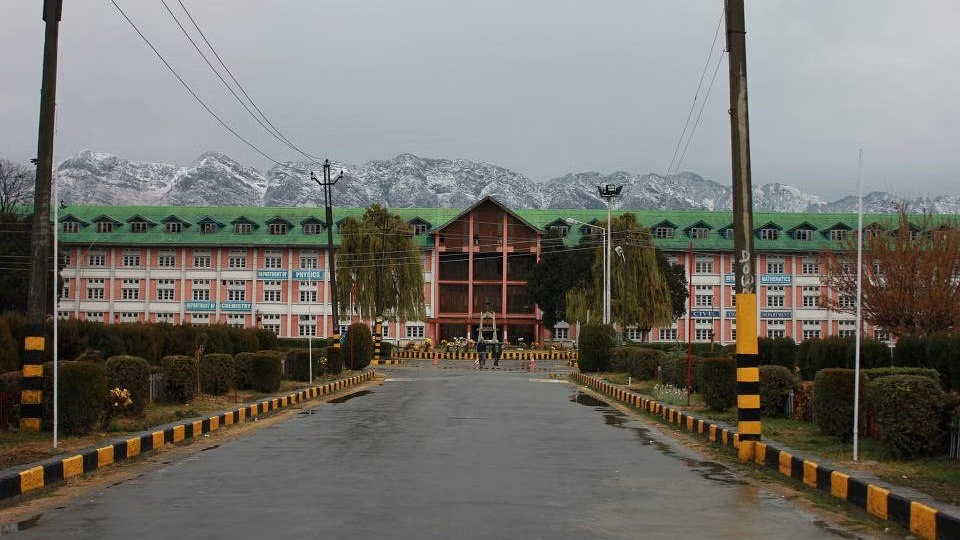The proposed relocation of NIT Srinagar to Pulwama has ignited a debate, with concerns over land use, accessibility, and economic impact.
By Er. Mohammad Iqbal Shah Peerzada
A heated debate has emerged surrounding the proposed relocation of the National Institute of Technology (NIT) Srinagar to Pulwama, igniting a spectrum of opinions and concerns. While some stakeholders argue in favor of the feasibility and long-term benefits of the shift, others warn of the potential economic, environmental, and infrastructural consequences. This discussion has become particularly relevant given the historical and economic significance of the land in question.
On one hand, proponents highlight the need for a modernized, expansive campus that can accommodate future academic and research advancements. On the other hand, critics raise concerns over the displacement of agricultural livelihoods and the potential loss of prime fertile land. This article critically examines these viewpoints and explores a possible path forward that balances growth with sustainability.
Key Concerns
1. Quantity of Land Required
One of the primary arguments against the relocation is the claim that a technological institute does not require a land area of 5000 kanals. However, this assumption is debatable when considering the infrastructure and expansion needs of such institutions.
A comparative analysis of top-tier Indian engineering institutes, including the Indian Institutes of Technology (IITs) and National Institutes of Technology (NITs), reveals that campus sizes often range from 5500 kanals to well over 8000 kanals. These campuses are not only centers for academic learning but also house research facilities, residential complexes, sports infrastructure, and other essential amenities that contribute to holistic student development.
Given the increasing role of interdisciplinary research and technological innovation, the need for ample space should not be underestimated. As a society, it is crucial to acknowledge the long-term infrastructural requirements of such institutions rather than dismissing land allocation as excessive.
2. Strategic Location Considerations
The location of a premier technological institute significantly impacts its accessibility, academic collaboration, and connectivity to urban hubs. Currently, NIT Srinagar benefits from being situated in the capital city, which offers robust transport links, proximity to industries, and access to a wider talent pool. The urban setting enhances student life, facilitates research partnerships, and attracts faculty from diverse regions.
However, the government and NIT administration have likely conducted feasibility studies before proposing Pulwama as an alternative site. It is reasonable to trust that logistical and strategic factors have been evaluated in their decision-making process. That said, a transparent disclosure of these findings could play a pivotal role in alleviating public skepticism and ensuring that stakeholders are well-informed about the rationale behind the move. Addressing concerns through open dialogue and data-backed reasoning will be instrumental in fostering trust and cooperation.
3. Land Fertility, Agricultural Impact, and Livelihoods
Perhaps the most pressing issue in this debate revolves around the potential loss of fertile land that sustains thousands of livelihoods in Pulwama. Known for its high-yield apple orchards and fertile soil, Pulwama plays a vital role in Kashmir’s agricultural economy. Displacing this agrarian economy could have far-reaching consequences, including loss of employment, reduced agricultural output, and disruption of local trade networks.
The government must take a meticulous, data-driven approach before making a final decision. Appointing an expert committee comprising environmentalists, agricultural scientists, economists, and local stakeholders could provide valuable insights into the potential impact of the relocation. Such a committee should assess:
• The soil fertility and agricultural productivity of the proposed site
• The number of livelihoods directly and indirectly dependent on this land
• Alternative land options that minimize economic disruption
• Possible compensatory measures for affected farmers and landowners
If the assessment reveals that the land in question is indispensable for the local economy, preserving it as a vital agricultural and horticultural resource must be prioritized. Any infrastructural expansion should ideally align with sustainable development practices that do not compromise existing economic structures.
Balancing Modernization with Tradition
Institutions like MIT, IITs, and Harvard have played transformative roles in shaping industries, economies, and societies worldwide. For Kashmir to compete on a global scale, investment in modern technological education is imperative. A state-of-the-art NIT campus could serve as a catalyst for regional progress, attracting investment, fostering innovation, and creating new employment opportunities.
However, modernization should not come at the cost of Kashmir’s agricultural heritage and economic backbone. Striking a balance between development and preservation is essential. Sustainable urban planning models—such as integrating educational infrastructure without compromising fertile land—could be explored to ensure that both technological progress and agricultural sustenance coexist.
The Way Forward
The ongoing debate over the relocation of NIT Srinagar presents a classic dilemma between progress and preservation. On one side, the promise of a world-class educational institute with state-of-the-art facilities is enticing. On the other, the socio-economic and environmental consequences of displacing fertile agricultural land cannot be ignored.
The government must adopt an impartial and empirical approach by involving experts and stakeholders in the decision-making process. A thorough analysis of all relevant factors—land suitability, economic impact, infrastructural feasibility, and community concerns—should guide the final decision. Only by carefully weighing the long-term benefits against immediate challenges can policymakers ensure that Kashmir moves forward without eroding its existing strengths.
By identifying what constitutes the ‘gold’ (agriculture and livelihoods) and the ‘diamond’ (technological advancement and education), a well-informed and balanced resolution can be reached—one that safeguards the interests of both present and future generations.
The views expressed in this article are solely those of the author and do not necessarily reflect the opinions or views of this Magazine. The author can be reached at [email protected]


Leave a Reply